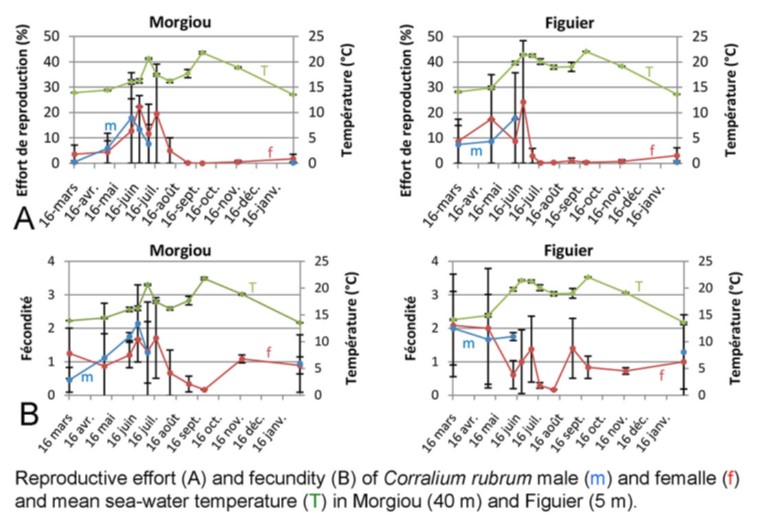Alexander ERESKOVSKY , Didier AURELLE, Isabelle DABAT-PIVOTTO, Anne HAGUENAUER, Sandrine CHENESSEAU (IMBE)
Jean-Christophe POGGIALE, David NERINI, Mathias GAUDUCHON (MIO)
Fréderic ZUBERER (OSU Institut Pytheas)
This project focuses on the impact of environmental fluctuations on the phenology of metazoans in marine coastal waters of different regions of Mediterranean Sea. The selected species for this purpose are three emblematic cnidarians: the red gorgonian Paramuricea clavata, the yellow gorgonian Eunicella cavolinii, and the red coral Corallium rubrum. These species are major elements of coralligenous ecosystems associated with high biodiversity in Mediterranean. They also have an important socioeconomic value either through diving or harvesting for the red coral. The aim of our project is to continue and extend the monitoring of the phenology of these species at the Marseille region and in other Mediterranean regions to better understand the dynamics of these populations and their potential response to climate change.
The objectives of this study are:
- Test the impact of temperature on the phenology of these species, including the reproduction
- Study the impact of environmental fluctuations on the stress level and identify critical phases for the survival of colonies at genetic and physiological levels;
- Estimate the variability in response to environmental changes and stress between species and within each species between populations in different Mediterranean regions;
- Estimate and model the impact of environmental fluctuations on population phenology and dynamics.
This study compared two iteroparous gonochoric species (separate sexes with repeated reproduction cycles) that are oviparous with external brooding - Paramuricea clavate and Eunicella cavolinii - with Corallium rubrum, a gonochoric but viviparous species. Results show that:
- fertility decreases with increasing depth for P. clavate and E. cavolinii for different sites and both sexes. Reproductive effort for E. cavolinii also decreases with increasing depth.
- the site effect is stronger than the depth effect.
A temporal shift of gametogenesis between two genetically distinct populations of red coral was observed: the colonies reproduce earlier in Figuier at 5 m deep than in Morgiou at 40 m deep.

Video for everyone to understand the isotopic method / Video pédagogique pour tous sur la méthode isotopique : http://www-dev.otmed.fr/techniques-scientifiques-5-minutes-dessinees


